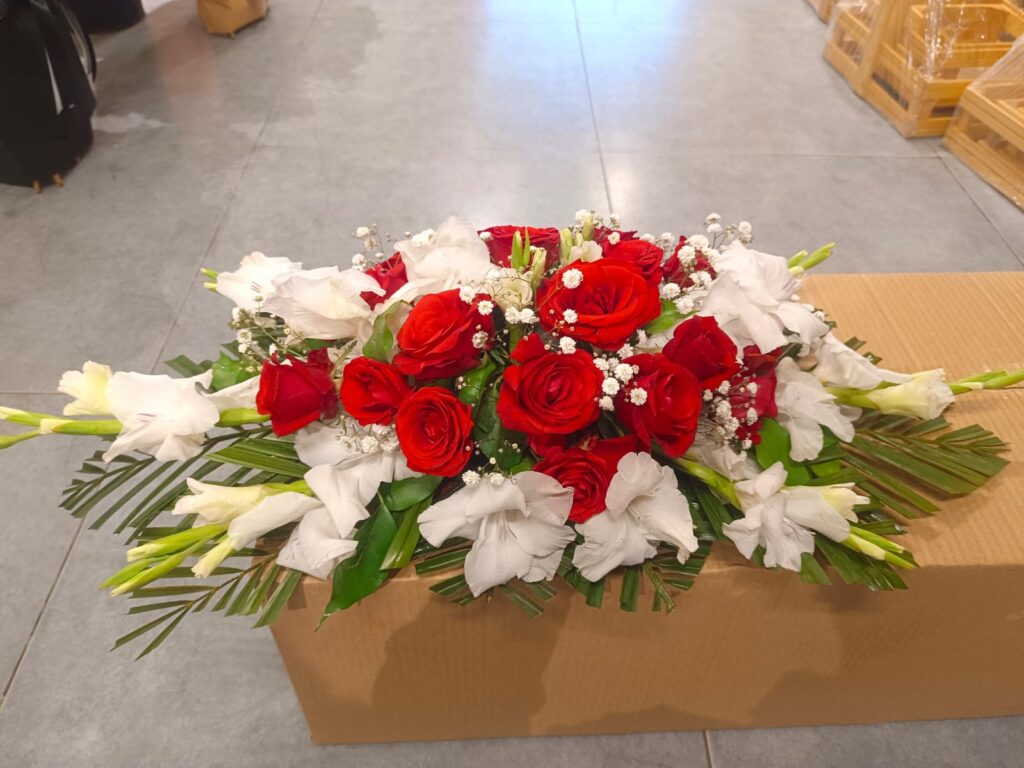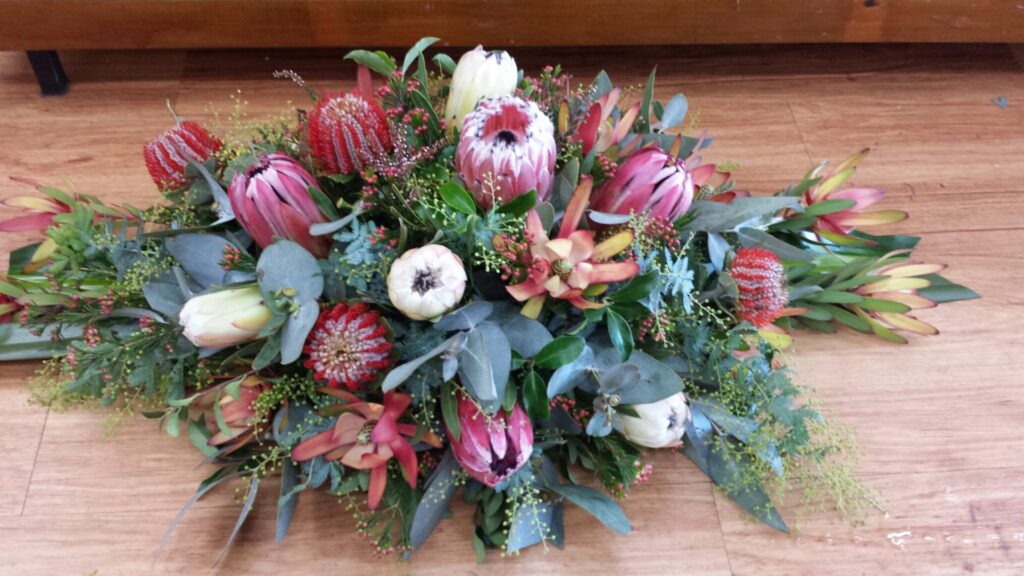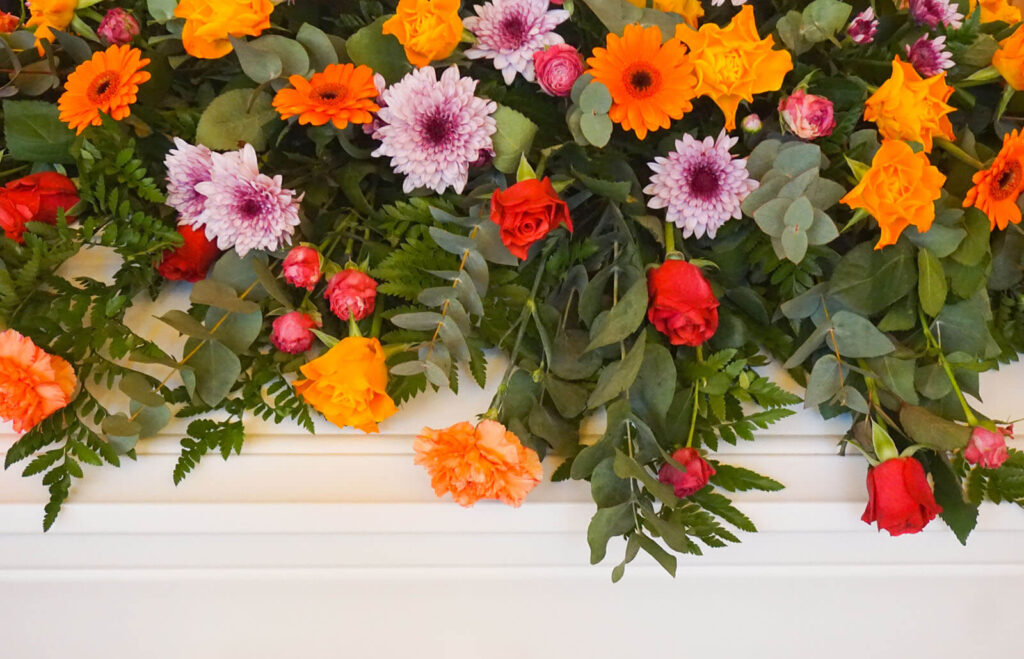Losing a loved one is an inevitable part of life, and during this difficult time, finding ways to honor their memory becomes paramount. Funeral flower arrangements have long been used as a symbolic gesture of love, respect, and remembrance. They not only provide a touch of beauty and elegance to a somber occasion but also serve as a tribute to the life that has passed. In this article, we will explore the art of creating meaningful funeral flower arrangements, from understanding the symbolism of funeral flowers to preserving these cherished tributes.
Understanding the Symbolism of Funeral Flowers
Funeral flowers have a language all their own, allowing us to convey heartfelt emotions when words fail us. The choice of flowers can speak volumes about the deceased, their personality, and the relationship we shared with them.
When it comes to selecting funeral flowers, it is important to understand the symbolism behind each bloom. Different flowers carry different meanings, and by choosing the right ones, we can pay tribute to our loved ones in a truly meaningful way.
The Language of Flowers in Mourning
The language of flowers dates back centuries and has played a significant role in mourning rituals across cultures. Each flower has its own unique symbolism, allowing us to express our emotions without uttering a single word.

For example, white lilies symbolize purity and innocence, making them a popular choice for memorial services. Their elegant and serene appearance brings a sense of peace and tranquility to the atmosphere, providing comfort to grieving hearts.
Red roses, on the other hand, signify love and respect. Their vibrant color and velvety petals evoke strong emotions, making them a powerful choice for honoring a lost spouse or partner. The deep red hue of the roses serves as a reminder of the deep love and affection shared between two souls.
Other flowers commonly used in funeral arrangements include carnations, which symbolize admiration and remembrance, and gladioli, which represent strength and moral integrity. By carefully selecting the flowers for a funeral, we can create a beautiful and meaningful tribute to the departed.
Cultural Significance of Funeral Flowers
Funeral flower customs can vary greatly depending on cultural traditions. Different cultures have their own unique ways of honoring the deceased through floral arrangements.
In Asian traditions, white chrysanthemums are commonly used as funeral flowers. These delicate blooms symbolize death and mourning and are believed to bring comfort to the departed soul. The pure white petals of the chrysanthemums represent the purity of the deceased’s spirit, while the yellow center symbolizes the light of the afterlife.
In Native American traditions, funeral arrangements often incorporate sage and other sacred herbs. These herbs are used to cleanse and purify the soul of the departed, ensuring a peaceful transition into the spirit world. The strong and earthy scent of sage fills the air, creating a sacred and spiritual atmosphere during the funeral ceremony.
Understanding the cultural significance of funeral flowers allows us to respect and honor the traditions of different communities. By incorporating these symbolic blooms into our arrangements, we can pay homage to the deceased in a way that is meaningful and culturally appropriate.
Choosing the Right Flowers for a Funeral Arrangement
Selecting the appropriate flowers for a funeral arrangement requires careful consideration of various factors, including the preferences of the deceased and their family, the theme of the service, and the overall atmosphere you wish to create.
Factors to Consider When Selecting Flowers
When choosing funeral flowers, it is crucial to consider the deceased’s favorite flowers or colors. These personal touches can add a significant level of meaning to the arrangement and can be a beautiful way to honor their memory. Additionally, consider the location and season of the funeral. Opting for locally sourced flowers or seasonal blooms can create a seamless connection with the surroundings and add a touch of natural beauty.
For example, if the deceased had a fondness for sunflowers, incorporating them into the arrangement can bring a sense of warmth and joy to the service. Sunflowers are known for their vibrant yellow petals and are often associated with happiness and positivity. Their presence can serve as a reminder of the bright and cheerful moments shared with the departed.
Another factor to consider is the cultural or religious background of the deceased. Different cultures and religions may have specific flowers that hold symbolic meaning in funeral rituals. For instance, in Chinese culture, white chrysanthemums are commonly used in funeral arrangements as they symbolize grief and are believed to bring comfort to the departed souls.
Popular Flowers for Funeral Arrangements and Their Meanings
There are certain flowers that have become synonymous with funeral arrangements due to their timeless beauty and profound symbolism. Some popular choices include:
- Roses: Symbolize love, respect, and eternal beauty. The velvety petals and delicate fragrance of roses can evoke a sense of tenderness and admiration. Red roses, in particular, are often chosen to express deep love and sorrow.
- Lilies: Represent purity, innocence, and the restoration of the soul. The elegant and graceful appearance of lilies can bring a sense of serenity and peace to the funeral setting. White lilies, in particular, are commonly associated with funerals and are often used to symbolize the purity of the departed soul.
- Carnations: Signify love, remembrance, and enduring affection. Carnations are known for their long-lasting blooms and come in various colors, each carrying its own significance. Red carnations symbolize admiration, while pink carnations represent gratitude and remembrance.
- Orchids: Symbolize strength, elegance, and everlasting love. Orchids are exotic and captivating flowers that can add a touch of sophistication to a funeral arrangement. Their unique shapes and vibrant colors can serve as a reminder of the beauty that exists even in times of loss.
- Gardenias: Represent purity, joy, and deep compassion. The delicate and fragrant blooms of gardenias can bring a sense of comfort and solace to those attending the funeral. Their pure white petals symbolize the purity of the departed soul and the compassion shared by those left behind.

By carefully selecting the right flowers for a funeral arrangement, you can create a meaningful tribute that not only honors the memory of the deceased but also provides comfort and solace to their loved ones. Whether it’s incorporating their favorite flowers, considering cultural or religious symbolism, or choosing flowers with profound meanings, each decision adds a layer of depth and significance to the arrangement.
Designing a Funeral Flower Arrangement
To create a beautiful and meaningful funeral flower arrangement, it is essential to understand the basic principles of floral design and create a balanced composition.
Funeral flower arrangements are not just about aesthetics; they hold a significant emotional value. They serve as a way to honor and remember the life of the deceased, offering comfort and solace to grieving loved ones.
When designing a funeral flower arrangement, there are several key factors to consider. Understanding these elements will help you create a truly impactful display that pays tribute to the person who has passed away.
Basic Principles of Floral Design
When designing a funeral flower arrangement, consider elements such as color, texture, and shape. Harmonizing these elements creates visually appealing and emotionally impactful displays.
Color plays a crucial role in conveying different emotions. While white flowers symbolize purity and innocence, red flowers represent love and passion. Choosing the right color palette can evoke the desired feelings and create a sense of serenity or celebration.
Texture adds depth and interest to the arrangement. Combining flowers with different textures, such as soft petals, delicate foliage, and rough branches, creates a visually captivating display that engages the senses.
Shape is another essential aspect to consider. The shape of the arrangement can convey different meanings. Circular arrangements symbolize eternity and the cycle of life, while triangular arrangements represent balance and harmony.
Pay attention to the size of the arrangement, ensuring it complements the space without overpowering it. A small and intimate gathering may call for a modest arrangement, while a larger venue may require a grand display to fill the space adequately.
Creating a Balanced Arrangement
Balance is key when designing a funeral flower arrangement. Seek harmony between different types of flowers, foliage, and accessories.
Incorporating a mix of heights, textures, and colors can create depth and visual interest. By combining tall flowers with shorter ones, you can create a sense of movement and variation within the arrangement.

Consider the symbolism behind each flower and choose blooms that hold personal significance to the deceased or their loved ones. Incorporating their favorite flowers or flowers that represent their personality can add a deeply personal touch to the arrangement.
Remember to choose a focal point, such as a large bloom or an intricately arranged centerpiece, to draw attention and convey the intended message. The focal point serves as the heart of the arrangement, capturing the essence of the person being honored.
Lastly, don’t forget about the container. The vessel holding the flowers can enhance the overall aesthetic. Whether it’s a simple vase, a woven basket, or a decorative urn, choose a container that complements the style and theme of the arrangement.
Designing a funeral flower arrangement is a thoughtful and creative process. It requires careful consideration of the deceased’s personality, the emotions you wish to convey, and the space in which the arrangement will be displayed. By understanding the basic principles of floral design and creating a balanced composition, you can create a truly meaningful tribute that honors the life and memory of the departed.
Personalizing Funeral Flower Arrangements
Adding personal touches to funeral flower arrangements helps celebrate the uniqueness of the individual being honored and creates a more intimate connection between the arrangement and the deceased.
Incorporating Personal Touches into the Arrangement
Consider including items that hold sentimental value to the deceased, such as a favorite photograph, a treasured piece of jewelry, or a handwritten note. These personal mementos add depth and meaning to the arrangement, allowing it to serve as a visual representation of the person’s life and legacy.
Conveying Emotion Through Flower Choices
The specific flowers chosen can convey different emotions and meanings. Vibrant colors such as red or orange can represent joy and celebration of life, while softer hues like pastel pinks and blues evoke a sense of tranquility and tenderness. Communicating intentions through flower choices allows for a more personalized and heartfelt tribute.
Preserving Funeral Flower Arrangements
Preserving funeral flower arrangements can serve as a lasting reminder of the love and support shown during this difficult time.
Techniques for Preserving Funeral Flowers
There are various techniques for preserving funeral flowers, such as air-drying, pressing, or using silica gel. Each method has its own benefits and considerations, so it is essential to research and choose the most suitable option for the type of flowers used.
Turning Preserved Flowers into Keepsakes
Preserved funeral flowers can be transformed into cherished keepsakes, such as framed pressed flowers, memorial jewelry, or even paperweights. These tangible mementos allow you to treasure the memories and moments shared with your loved one, providing comfort and solace in times of grief.
In conclusion, creating meaningful funeral flower arrangements is an art that combines symbolism, personalization, and design principles. By understanding the significance of funeral flowers, choosing the right blooms, and incorporating personal touches, you can craft elegant and heartfelt tributes that honor and celebrate the lives of the departed. Whether through fresh floral arrangements or preserved keepsakes, these creations serve as a lasting reminder of the love and legacy that continue to bloom even in the face of loss.

